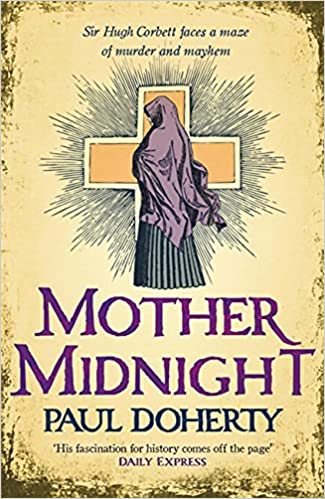Revenge, it has been said, is a meal best served cold. But what revenge also does is make the perpetrator’s heart grow cold, and ruthless. This novel is all about various forms of revenge, taken by women against men who have abused women and sold them as chattel into prostitution, in other words, human trafficking, and revenge taken against women who enabled such wickedness, or got in the way the fury of the revenge taker. Mother Midnight is the assumed title of a woman who ran a very prosperous brothel in London called The Queen of the Night. This novel, unlike the previous one Hymn to Murder, is very linear. There are less subplots or confusing twists and turns. The novel focuses on the disappearance and murder of nuns who are part of the convent of St. Sulpice outside London. St. Sulpitius was a real person who lived in the 7th century in France, and at the end of his life helped founded a monastery, and later other such monasteries and nunneries were started bearing his name.
The nunnery in this particular novel is what is called an open monastery, by which is meant that nuns could come and go. They were not sworn to be there for life. Of course that very feature made them more open to the world, and its mayhem. This was not a cloistered nunnery. Hugh Corbett is brought in to solve various mysterious murders and in the process discovers the trade in human flesh that had led to various nuns being abducted, put on boats and shipped off to brothels in France (and vice versa).
There is a difference between the reveal in a mystery novel and the resolution of the plot. Sometimes the two come together at the very end of the novel, but here the reveal comes piecemeal throughout the second half of the story. Hugh and Ranulf, as the king’s avenging angels continue to get to the bottom of the murky cesspools and render clean up of the dark underworld of London and its surroundings. As it turns out, monks and nuns can be some of the worst revenge takers of all— taking justice into their own hands. The most interesting new character in this novel is a moon girl, Megotta, which is to say a gypsy who was sent by a royal clerk to spy on and ferret out the truth of what was going on in that nunnery. Doherty does a great job of painting a vivid picture of this strong, and terribly abused woman.
This novel deals less with the history of the period, and more with the dark underbelly of the cultural milieu which on the surface appears to be Christian and pious, but often is not. Often the faith is used as a veneer to cloak the darkness that lurks in the hearts of women and men.













